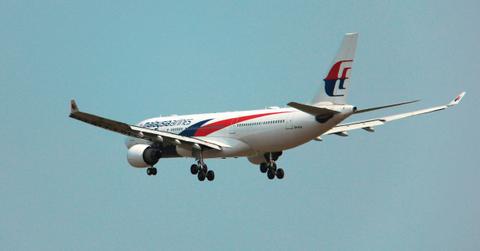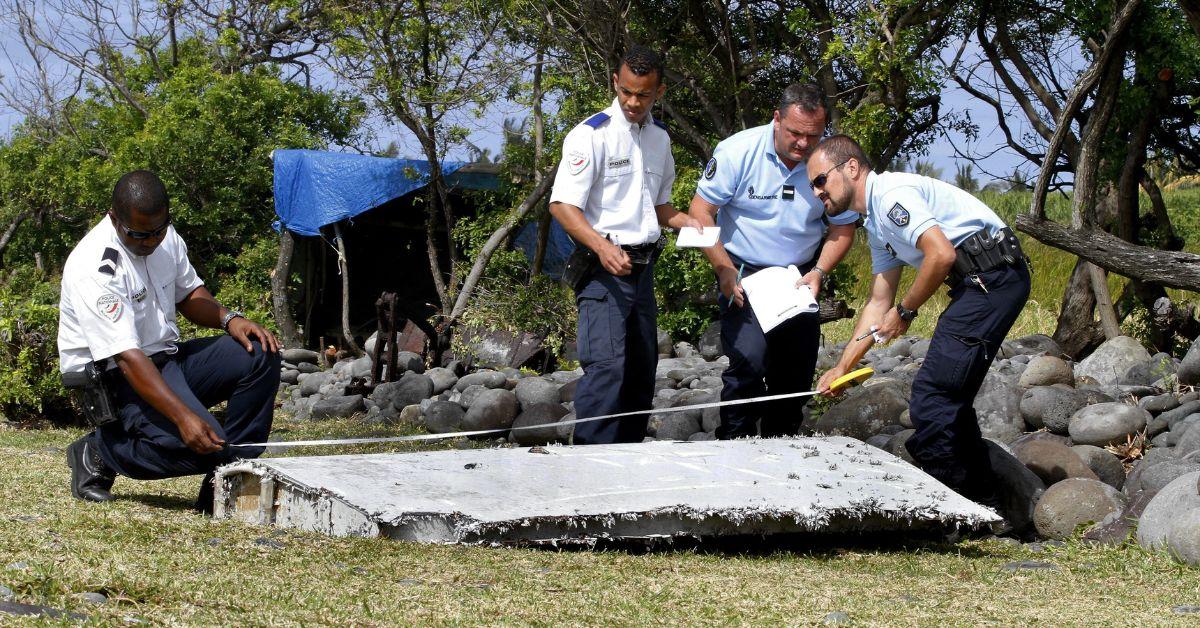Bombshell: The Six-Second Signal That Could Finally Solve the Mystery of MH370 After 10 Years

Researchers have developed a new method that could locate flight 370's wreckage.
June 18 2024, Published 11:06 a.m. ET
British scientists have discovered a signal that could solve the decade-long mystery of the lost Malaysia Airlines Flight MH370's final resting place, RadarOnline.com has learned.
The plane, which vanished on a routine flight from Kuala Lumpur, Malaysia, to Beijing, China, on March 8, 2014, is believed to have crashed into the Indian Ocean after deviating from its course for unknown reasons and running out of fuel.
Researchers from Cardiff University are analyzing data from hydrophones that picked up a six-second signal recorded around the time that the plane likely crashed into the ocean.

Two aviation experts recently claimed that Malaysian Airlines Flight MH370 was flown into a “black hole” by the aircraft’s “skilled pilot” to never be seen again.
A 200-ton aircraft crashing at a speed of 200 meters per second would release kinetic energy equivalent to a small earthquake, large enough to be detected and recorded by hydrophones thousands of miles away.
"Given the sensitivity of hydrophones, it’s highly unlikely a large aircraft impacting the ocean surface wouldn’t leave a detectable pressure signature, particularly on nearby hydrophones," Dr. Usama Kadri, a reader of applied mathematics, told The Telegraph.
Hydroacoustic stations have previously successfully detected distinct pressure signals from aircraft crashes and seismic events from distances of over 3,000 miles.

The technology could potentially be used to locate future open sea plane crashes.
Two hydroacoustic stations set up as part of the Comprehensive Nuclear Test-Ban Treaty, one in Cape Leeuwin in Western Australia and another in Diego Garcia in the Indian Ocean, are close enough to the search area.
But the signal was only picked up at Cape Leeuwin. "This raises questions about its origin,” said Kadri, explaining that further tests would need to be conducted.
An Argentine navy submarine, the ARA San Juan, was found a year after it imploded in the South Atlantic in 2017 by detonating grenades in the ocean to simulate the sub's explosion and comparing the data to signals picked up by hydrophones at the time of the disappearance.

Researchers believe underwater audio signals from controlled explosions could help pinpoint the crash site.
"A similar exercise, using either explosions or airguns of energy levels equivalent to those believed to be associated with MH370 could be conducted," Kadri explained. "If the signals from such explosions showed pressure amplitudes similar to the signal of interest, it would support focusing future searches on that signal."
"If the signals detected at both Cape Leeuwin and Diego Garcia are much stronger than the signal in question, it would require further analysis of the signals from both stations. If found to be related, this would significantly narrow down, almost pinpoint, the aircraft’s location."
"On the other hand, if the signals are found to be unrelated, it would indicate a need for authorities to reassess the time frame or location established by their official search efforts to date."

Despite an extensive search effort, flight 370's wreckage has never been located.

Never miss a story — sign up for the RadarOnline.com newsletter to get your daily dose of dope. Daily. Breaking. Celebrity news. All free.
"The disappearance of MH370 motivated this work because it raised questions about the ability to detect aircraft crashes in the ocean, and the potential use of hydroacoustic technology to aid search and rescue efforts," Kadri added.
"Unfortunately, we’ve been unable to find a signal with the certainty needed to launch a new search for the missing aircraft. However, if the recommendations are followed by the appropriate authorities, we can assess the relevance of the observed signals, potentially shedding light on the location of MH370."
Despite the extensive search, the plane's wreckage has never been found, although debris from the lost aircraft has washed ashore on the African coast and several islands in the Indian Ocean.
Powered by RedCircle



